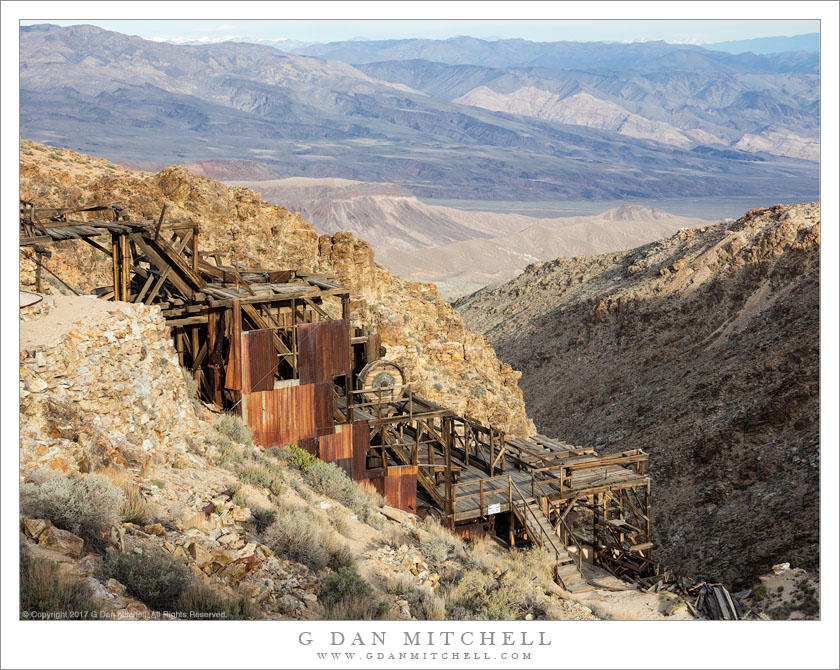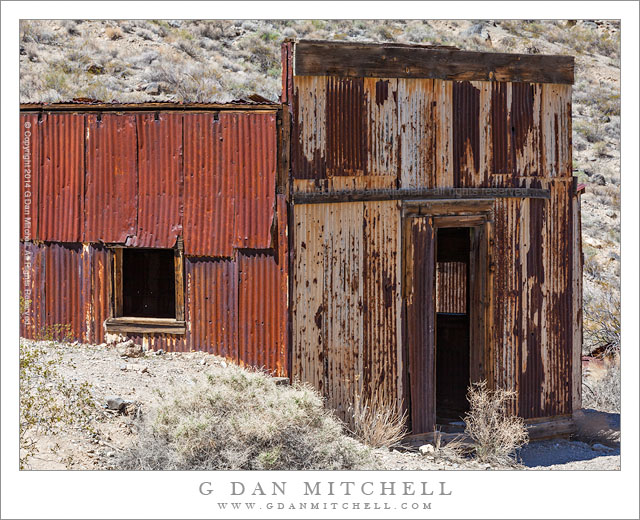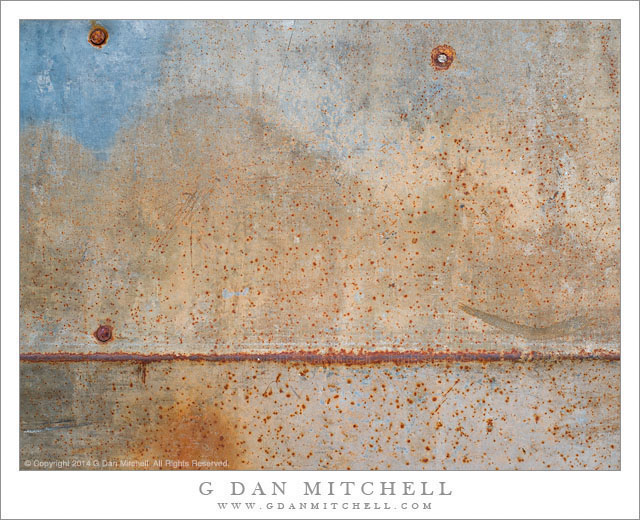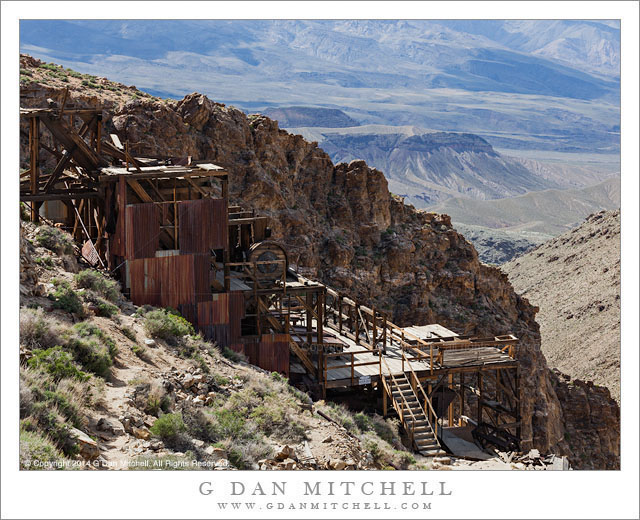
Abandoned Stamp Mill. Death Valley National Park, California. April 4, 2017. © Copyright 2017 G Dan Mitchell – all rights reserved.
An abandoned water-powered stamp mill high in the Panamint Range, Death Valley National Park
It seems that every national park or monument has both a natural and human story, or perhaps what might be seen as a story about the relationship between the two. While the power of natural forces (heat, water, geology, and more) is abundantly obvious in the huge, austere landscape of Death Valley National Park, the human history of the place is rarely far from view. It begins with the evidence of people who lived here long before European-origin settlers came to the place, evidence that can be seen in rock art scattered throughout the park, in the recognition that many settlements (current and now-abandoned) have a very much longer history than we may think, and in the remnants of those earlier populations who still occupy and identify with this landscape.
Perhaps more obvious is the more recent history of those who came to look for mining success. (There are places in the park where this still takes place.) Some examples are obvious to the casual visitor, but the more time you spend in the back-country area of the park the more you understand that this particular history is everywhere — though not usually as obvious as this example. This stamp mill, built to crush gold ore, is amazing in a number of ways. Perched at the end of high ridge in rather remote location, it was powered in the most unlikely manner… by water piped in from a spring over twenty miles away. The location is stupendous, and it is easy to think that practical issues may not have been the only considerations in choosing the site. From here one can look down thousands of feet to broad alluvial slopes leading towards Death Valley, but one can also look further into the distance and see the snow-covered peaks of the Sierra Nevada.
 G Dan Mitchell is a California photographer and visual opportunist. His book, “California’s Fall Color: A Photographer’s Guide to Autumn in the Sierra” is available from Heyday Books and Amazon.
G Dan Mitchell is a California photographer and visual opportunist. His book, “California’s Fall Color: A Photographer’s Guide to Autumn in the Sierra” is available from Heyday Books and Amazon.
Blog | About | Flickr | Twitter | Facebook | Google+ | LinkedIn | Email
All media © Copyright G Dan Mitchell and others as indicated. Any use requires advance permission from G Dan Mitchell.



